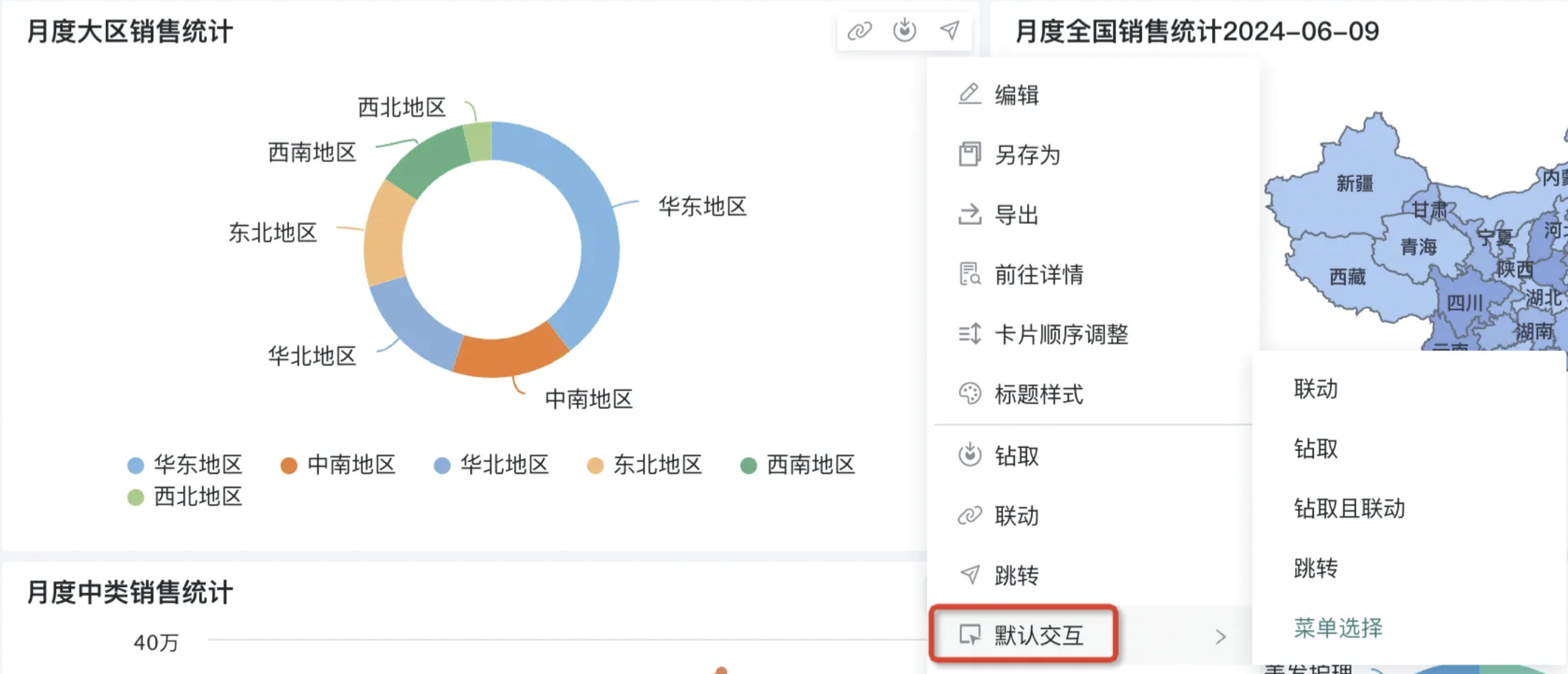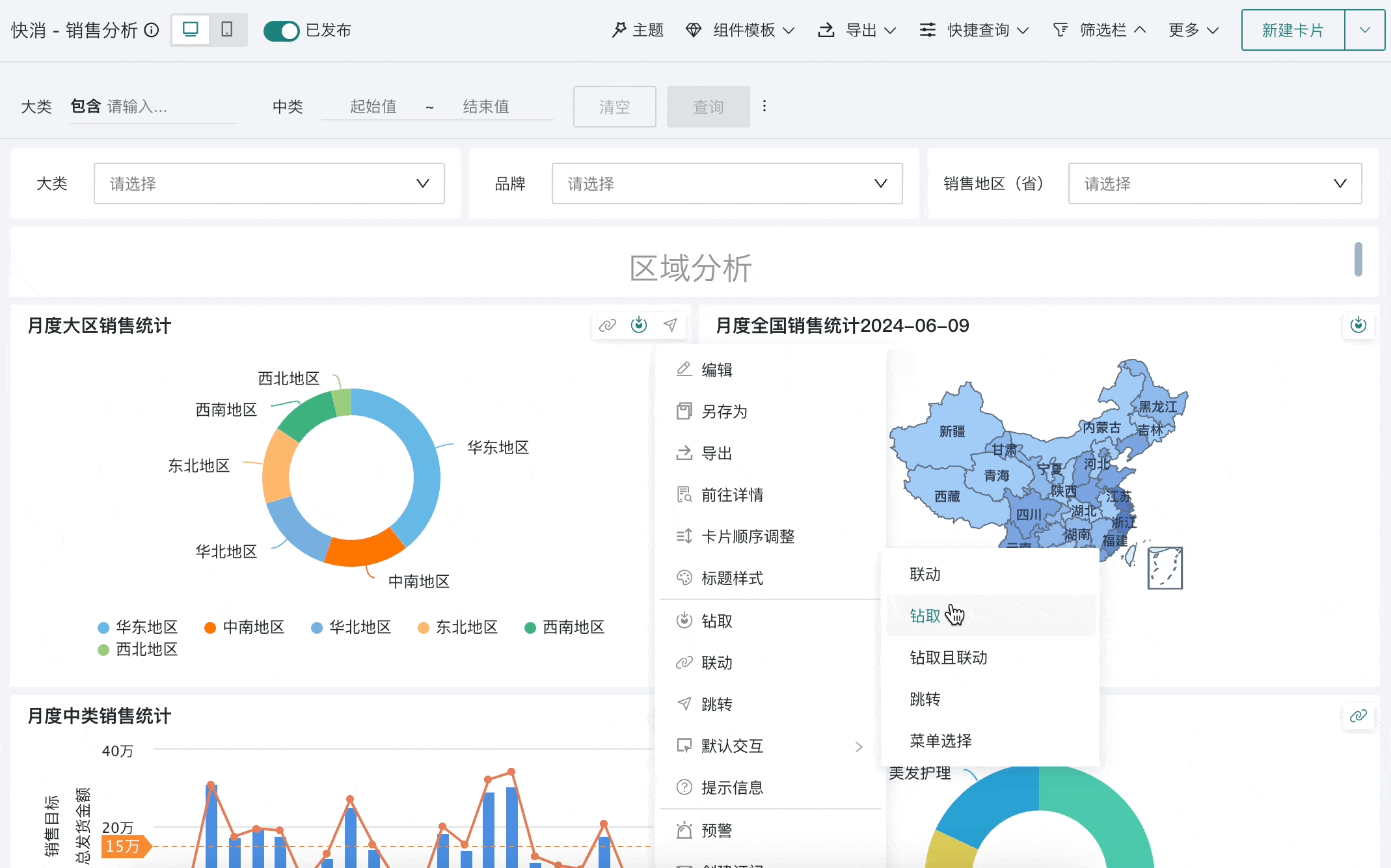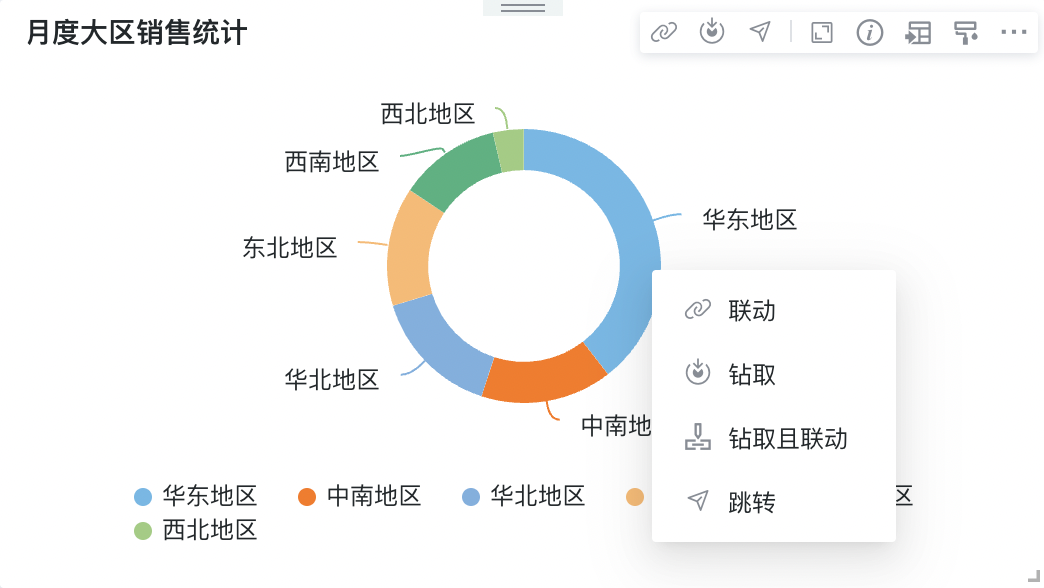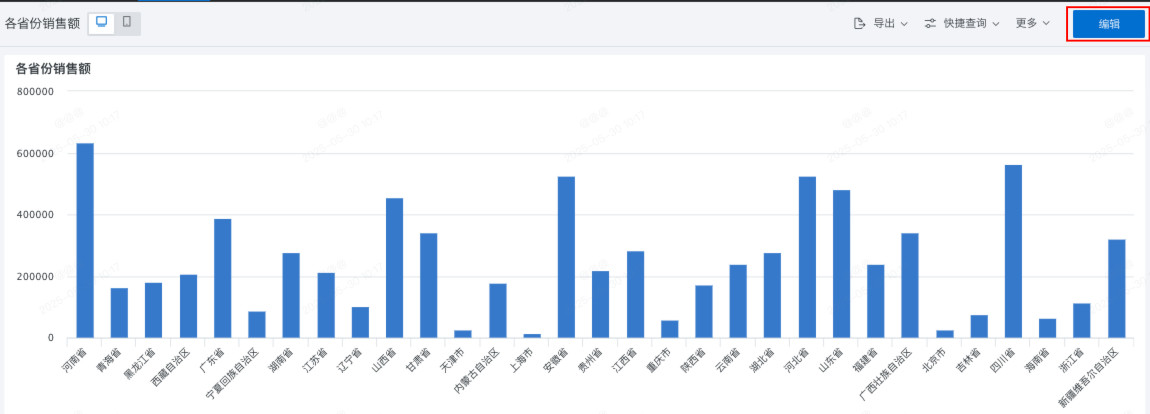Default Interaction
1. Overview
Users often need to configure multiple interactive functions for dashboard charts to meet different analysis needs, such as configuring jump, linkage, drill-down, and other interactions. These interactive functions usually need to be executed after users explicitly trigger them.
However, to improve operational efficiency and user experience, Guandata BI allows users to set a default interaction action. This default interaction action refers to the interactive operation that the system executes by default when there is no specific trigger condition or when users have not explicitly selected a certain interactive function.

Note: Since version 7.2 distinguishes between online and draft states of dashboards, default interaction needs to be configured in the dashboard editing page.
1.1. Select "A Certain Interaction"
Producers can set one of the card's interactive behaviors as default. When users need to quickly execute a commonly used interactive function, they don't need to select through menus or settings panels every time, but just click to trigger the default interaction action.
For example, the regional sales statistics chart currently has 4 analysis interactions configured. The producer sets the drill-down function as the default interaction action. When users click on the East China region in the chart, the system will automatically execute the drill-down operation, displaying sales data for provinces or cities under the East China region.

1.2. Select "Menu Selection"
Menu selection means that when we click on dashboard cards, a menu bar of all configured interactive functions for that card will pop up. Users just need to click on the specific interaction in the menu bar to analyze according to that interaction.
The menu selection function provides users with a clear list of interactive functions, enabling users to quickly select and switch between different interactive functions. This flexibility allows users to agilely use different interactive functions according to their needs and analysis scenarios.

